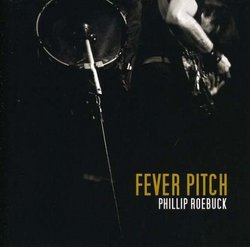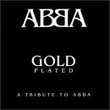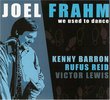| All Artists: Phillip Roebuck Title: Fever Pitch Members Wishing: 0 Total Copies: 0 Label: Manual Records Release Date: 9/12/2006 Album Type: Live Number of Discs: 1 SwapaCD Credits: 1 UPC: 733792696822 |
Search - Phillip Roebuck :: Fever Pitch
 | Phillip Roebuck Fever Pitch
|
Larger Image |
CD DetailsSimilar CDs
|
CD ReviewsThe Movement of a One-Man Band Kodge | Allston, MA | 05/02/2009 (5 out of 5 stars) "Nine of out ten people will laugh at the thought of a one-man band solely because of Dick Van Dyke, his act as hokey as his British accent, in "Mary Poppins". Phillip Roebuck turns all of our negative associations of one man bands on their head. Not only does he lack any quality related to hokey, Phillip represents the best kind of music: self-conceived and D.I.Y. in every way possible.
Phillip Roebuck isn't only a song craftsman, but an instrumental craftsman as well. He sings and plays the banjo, bass drum and tambourine all at once. A homemade drum apparatus, consisting of a bass drum sustained by a backpack attaches to his back. One side of the bass drum houses the tambourine. A mallet thumps the bass drum when Phillip lifts his spurred right heel, connected to a pulley, and a brush strikes the tambourine when he does the same with his left. If that isn't creative enough, he built the banjo he plays! Regretfully, this reviewer has never had the pleasure to see Phillip Roebuck live either in any of the small venues in Virginia where he usually plays or in any of New York City's subway stations where New York Press hailed him best performer of 2003. Any visual insight gleans from video recordings. Phillip neither looks ridiculously consumed by playing the drums, nor does he look bored with it: He doesn't walk around or clap his knees together, and, as importantly and inversely, he doesn't relaxingly sit-down. The drum apparatus requires him to remain stationary and standing while alternately lifting his heels. He still rocks his upper body and moves his head with the vocal pattern like any performer. Surprisingly, his voice is just as powerful as what's on his back. Visually, the only thing that differentiates Phillip from other street performers is a compulsory foot-tapping, something the listener wants to do in equal proportion. "Fever Pitch", his most recent album released in 2006, departs from a more traditional banjo-style found in "One-Man Band" released 2 years prior. Phillip plucks single strings infrequently and relies less on individual notes, what we think of when we hear the banjo, in "Fever Pitch." In most songs Phillip slides around on the banjo's fret board and follows through in his strumming with the traditional banjo returning either as moment of fury or as a faster, note conscious rhythmic device. Songs like "Come On Home" let the listener know that Phillip Roebuck hasn't forgotten how to play the banjo as we most commonly hear it. The modern style with which he plays the banjo on "Fever Pitch" also effects how he sings along with it. Phillip's voice doesn't tactfully follow the walking of his fingers like on his last album, but works within the general progression of songs like "Monkey Fist" and "In The Hole", giving the album a more personal, less technical feel than the last. The only song that sounds as if it belongs on his last album is "Pocket Knife", where Phillip's vocal pattern slips back into its dependency on where the banjo travels rather than the feeling it conveys. The album is a culmination of Phillip Roebuck not as a singing banjoist with drum set on his back, but as a one-man band that blurs the focus on just one sound, one instrument. The weakest sound on Phillip's last record is without a doubt the drum set. It feels like a backup to everything else because of its volume and uneventful patterns. On "Fever-Pitch" Phillip Roebuck transforms the drums into his greatest strength because of how integral they are in setting the mood for the vocals and banjo to follow. If you don't know English and you've never heard a banjo before drums will tell you how to frame any new elements. Drums are the original music, the instrument we've had in our chest that fluctuates with mood ever since birth. In "Movement", a song that is as slow in tempo as it is impacting, Phillip talks about traffic rumbling outside of his door, plays the banjo at a chugging speed. The steady bass drum and tambourine tell the same story. We feel the lack of movement, whether it is the narrator trapped in his room, or the gridlocked traffic outside. Not accidentally, "Movement" is the longest song on "Fever Pitch" in order to convey the lack of it even more thoroughly. Finally, the song breaks its droningly steady pace to give way to a more rapid banjo strums, frantic tambourine strikes, and last but not least in importance, an aggressively paced bass drum that informs us that movement is occurring with no words at all. So what type of music does Phillip Roebuck play? Some genres include roots, blues, garage, folk, alternative, and "backbeat"; but I'm more apprehensive to throw him under any of these headings than the sites that Phillip govern. Fans of music always proliferate their favorites with the trite saying "there is nothing else like it," and unfortunately, I'm in the same position, uttering the same phrase to you, the review reader. What I can say wholeheartedly is that titles follow Phillip and not the other way around. He's a one-man band that builds his own instruments, plays live music, looks alive when he's playing his creations and in no way resembles this type of music in one instance, or that the next. Do I even have to mention that "Fever Pitch" was recorded live and lacks a producer? The mood of each song is as varied as his style is consistent. But enough with my praise, you're either going to go out on a limb and listen to him, or not. Which will it be?" |

 Track Listings (10) - Disc #1
Track Listings (10) - Disc #1

